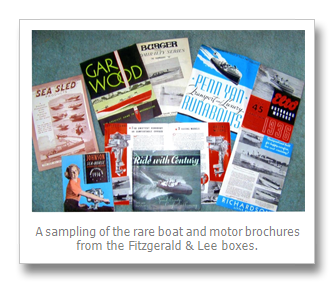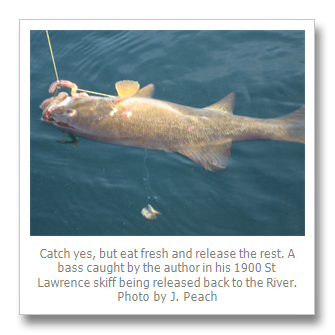Written by
John Peach posted on September 13, 2014 12:26
Save The River’s Bass Catch and Release Program
Save The River, the Upper St. Lawrence River’s environmental organization which has run a successful Muskellunge Release program since 1987, was challenged a couple of years ago by two of its donors to develop a similar Bass Catch and Release(C&R) Program.
Those of us in the office and on the Board of Save The River were amazed to learn that the 1000 Islands was one of the few major fishing areas of North America not to have a formal bass C&R program in operation. The 1000 Islands section of the River has historically been recognized as one of the best bass fisheries in North America; recent changes in the River environment, such as the introduction and spread of Quagga and Zebra Mussels; the explosion of Round Goby; Viral Hemorrhagic Septicemia (VHS): and the resurgence of Double crested Cormorants, have negatively affected bass populations.

The introduction of zebra and quagga mussels, Round goby, and VHS have all been tracked to ballast water from salt water vessels transiting the St Lawrence Seaway. New York State Department of Environmental Conservatin (NYSDEC) noted that 14 of the 15 highest ranking year classes of bass originated before 1989, while survival of the most recent year classes is among the lowest in their 35 year data. Zebra and quagga mussels are very efficient filter organisms and the resulting clear water in the River has changed the ecosystem and fish habitats in a negative way. Gobies, while providing a plentiful supply of food for bass, pike, and walleye, also are voracious foragers of bass nests. They have been documented darting into eat bass eggs, within seconds of the bass leaving (or being pulled off by an early season fisherman) the nest. VHS, a virus, was responsible for the killing of hundreds of mature Muskie several years ago.

While overall numbers of adult smallmouth bass have declined, the size of individuals has increased due to a shift in bass diets toward more abundant benthic food sources such as Gobies and Crayfish. Larger, younger individuals have resulted in younger fish becoming vulnerable to fishing earlier, creating the illusion that the bass population in the River remains healthy. Additionally, as the number of anglers has increased a greater proportion of the population is vulnerable to fishing than ever.
Catch and Release fishing has become a globally accepted practice to ensure plentiful game fish populations. More than 1000 muskies have been caught and released since SaveThe River, working with the Thousand Islands Biological Station, first partnered with anglers, guides and researchers in an effort to stabilize and promote growth of the species. Returning large adult Muskies to the River has helped strengthen the population. Fishermen returning limit size (54”) Muskie to the River receive a Michael Ringer Muskie print as a reward for successfully releasing the large fish.

Releasing a larger proportion of bass caught by anglers is an approach that can be used to reduce mortality of adult fish and allow more bass to survive. The bass population in the River will benefit if anglers restrict their take of fish to only those, which they will consume that day, while releasing the rest. A shore dinner of fresh cooked St Lawrence River bass remains one of the signature dining experiences of the 1000 Islands. Fishermen are being encouraged to release the larger bass since they are the most prolific breeders in the fishery.
Fishing techniques recommended for C&R
Save The River launched its Bass Catch and Release program this June, at the start of the bass season. In conjunction with Ed Huck Marine in Rockport, a weekly winner of a special Catch and Release sweatshirt is selected from photos submitted electronically, to Save The River.
The highly sought after sweatshirts are supplemented by special t-shirts that are available for $25 at Save The River’s Clayton office. Facebook, Twitter, and Save The River’s website are also used to recognize anglers participating in C&R. Participants in Save The River’s Bass Catch and Release program are encouraged to join Save The River and help support the many programs benefitting the health of the River.
Information gathered about the bass caught and released will be provided to the Thousand islands Biological Station (TIBS). They have always been part of the Muskie release program and currently monitor bass, focusing on recruitment of young of the year nesting, disease and adult monitoring during the spring.
Catch yes, but eat fresh and release the rest…
By John Peach, Huckleberry Island, Ivy Lea
John and his wife Pat, live on Huckleberry Island, near Ivy Lea, from May through October. The rest of the year they reside in Princeton, NJ, although John continues to make frequent return visits to the Islands throughout the winter. John retired several years ago from his career in international business. His family has owned a place in the Thousand Islands for over 50 years. John is a past president of Save The River, and is still active on the Save The River board.
Click here to see John’s other articles for TI Life.